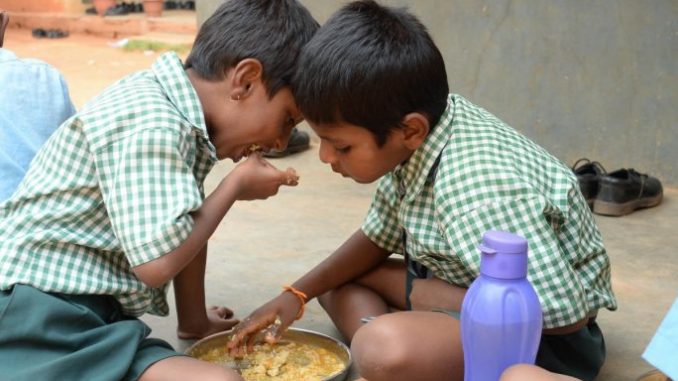
The Right to Food Campaign suggested inclusions in the Budget 2021-22 on social sector during a Pre-Budget Meeting (PBM) on December 17, 2020 to solve India’s hunger problem based on a Hunger Watch survey carried out amongst marginalized communities in the context of Covid-19.
The group demanded an enhanced budget for mid-day meals and Integrated Child Development Services (ICDS) to ensure nutritious hot cooked meals, including eggs, in anganwadi centres and schools. They also asked for anganwadi-cum-creches provisions and better allocations for the National Creche Scheme that has come down in the last few years.
“Government support in the form of free rations, and alternatives to school and anganwadi meals in the form of dry rations and/or cash transfers reached more than half the people (PDS having relatively better outreach). While this support from the government programmes has been crucial, the staggering levels of hunger witnessed during the Hunger Watch also showed the inadequacy of measures announced in the Pradhan Mantri Gareeb Kalyan Yojana (PMGKY),” they said.
The rare in-person survey conducted in September by multiple networks stated that many people are left out of such policies and even those people who avail the entitlements reported a lower overall consumption than before the lockdown. This calls for urgently strengthening and expansion of these schemes, said members.
Similarly, they suggested universal maternity entitlements following poor outcomes of exclusive breastfeeding and nutrition in the National Family Health Survey-5 (NFHS-5.) The organisation said that the Pradhan Mantri Matritva Vandana Yojana must be expanded to include all pregnant women without any restrictions on number of births or similar conditions.
“The factsheets recently released by the NFHS-5 show that there has been a stagnation and even increase in some states, in the prevalence of malnutrition among children. While this data pertains to the period before the lockdown, it can only be expected that the situation is much worse after,” they said.
Further, they asked for a universal Public Distribution System (PDS) that provides every individual with 10 kg grain, 1.5 kg pulses and 800 gm cooking oil. In recent years, allocations towards the Food Corporation of India (FCI) have been lesser than the actual food subsidy. Despite additional grains provided as part of COVID-19 relief, the additional budgetary provision for FCI in the supplementary budget is only Rs. 10,000 crores. The group said that continuous underfunding for FCI weakens price support to farmers and pushes them into further debt. The Government of India should provide an adequate budget to strengthen the FCI system, they said.
Members also argued for increased government contribution towards social security pensions to at least Rs. 2000 per month for old people, single women and disabled persons instead of Rs. 200, stagnant since 2006. Employees under the National Rural Employment Guarantee Act (NREGA) should avail 200 days of employment per household with statutory and timely minimum wage payment.
Accordingly, the Campaign advocated for an urgent need to create a National Urban Employment Guarantee Programme to address the disparity between abysmally low wage rates and increasingly private provision of healthcare and education.
“Variations of this have already been operational in a few states such as Himachal Pradesh, Odisha, and Jharkhand,” they said.
Preliminary results from the survey carried out in 11 states showed that even five-months after the lockdown, 62 percent of the households surveyed lower levels of income. There was a 53 percent decrease in intake of cereals, a 64 percent decrease in pulses, a 73 percent decrease in vegetables and 71 percent decrease in eggs/non-vegetarian items. This showed a 71 percent worsening of nutritional quality and a 45 percent increase in need to borrow money for food.
“While the data being presented may not be representative of the district, state or country, they do, however, tell a story of deprivation of thousands of households in similar situations,” they said.
Related:
Delhi’s workforce voices their grievances at DRRAA’s Hunger Hearing
Malnutrition reduced in India: WCD Ministry
Now, Smriti Irani says no data on anganwadi workforce!
In Madhya Pradesh, eggs blur the line between religion and nutrition